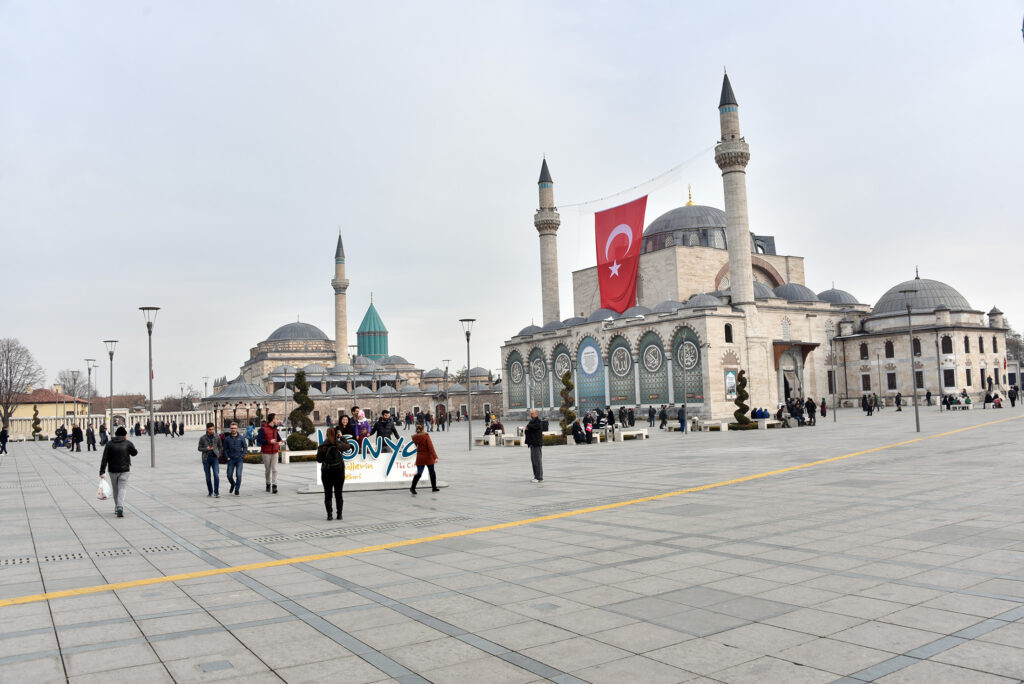The Selimiye Mosque is more than just a mosque; it stands as a testament to the rich history of the Muslim community in Konya, Turkey.
Built in the 16th century during the Ottoman era, this magnificent mosque has been a cornerstone of the city’s religious and cultural traditions.
Those who visit the Selimiye Mosque today can see the exquisite domed library building attached to the mosque on the right, which is a later addition and a beautiful example of Ottoman architecture.
Located in the heart of Konya’s business center, to the east of the Aziziye Mosque, the Selimiye Mosque is a popular destination for Muslims and non-Muslims alike who want to learn more about the history of Islam in Turkey.
What’s particularly fascinating about this mosque is that it was built next to the funerary shrine complex of Mevlana Celalüddin Rumi, a Persian sufi mystic who is now remembered as one of the greatest poets in the world. Today, the Mevlâna Museum is a popular attraction for visitors who want to learn more about Rumi’s life and work.
The mosque itself is an architectural masterpiece that is steeped in history. Commissioned in 1558 by Selim II, who was then a şehzade (prince) working as a sanjak governor, the building was constructed under the watchful eye of Mimar Sinan, who was the chief architect at the time.
Despite the fact that the mosque was built centuries ago, it still exudes a sense of grandeur and majesty that is sure to captivate anyone who steps foot inside.
Architecture
The double-minaret mosque is a typical 16th century Ottoman mosque and it resembles Fatih Mosque in İstanbul. The praying area is roofed by a big dome. There are seven small domes over the portico. The mihrab is made of blue marble and the minbar is made of white marble.


